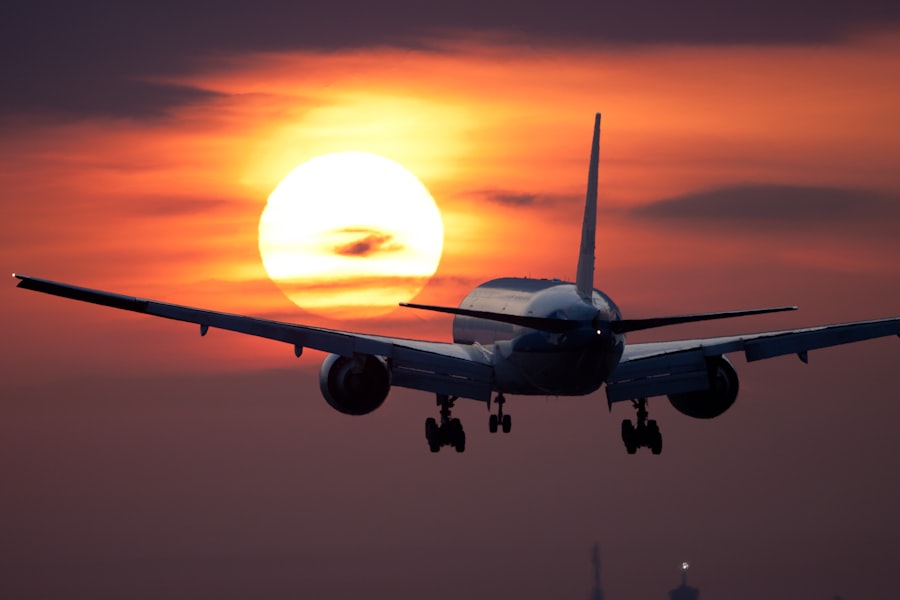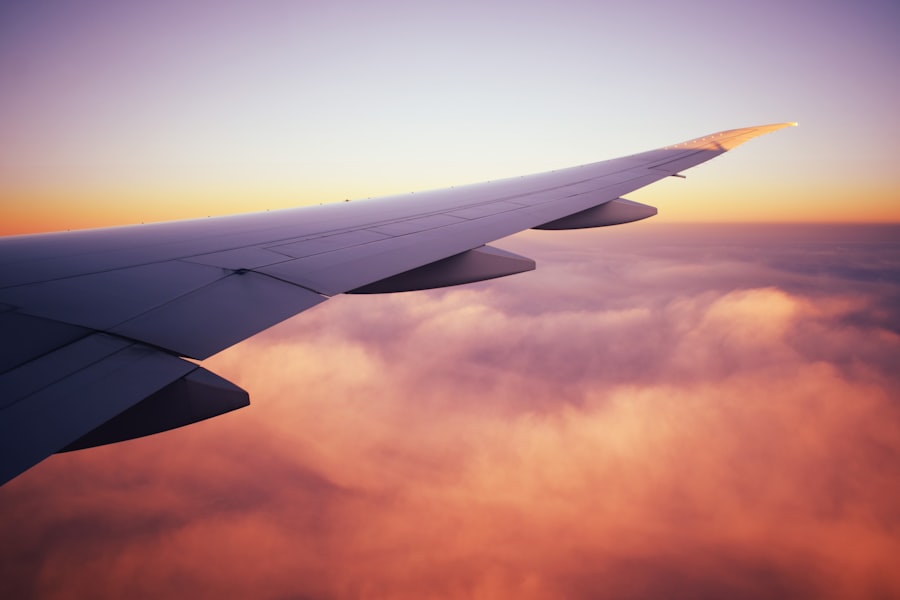The Boeing 787 Dreamliner, a revolutionary aircraft that made its debut in the early 21st century, represents a significant leap forward in commercial aviation. Launched in 2004, the Dreamliner was designed to meet the evolving needs of airlines and passengers alike, combining cutting-edge technology with a focus on efficiency and comfort. The aircraft’s first flight took place in December 2009, and it entered service in October 2011 with All Nippon Airways (ANA).
Since then, the 787 has become a symbol of modern air travel, showcasing Boeing’s commitment to innovation and sustainability. The Dreamliner is notable not only for its sleek design but also for its use of advanced materials and systems. Constructed primarily from composite materials, the aircraft is lighter than traditional aluminum-bodied planes, which contributes to its fuel efficiency.
The 787 family includes three variants: the 787-8, 787-9, and 787-10, each designed to cater to different market needs. With a capacity ranging from approximately 242 to 330 passengers, the Dreamliner has been embraced by airlines around the world, becoming a staple for long-haul routes. Its introduction marked a new era in aviation, characterized by enhanced performance and passenger experience.
Key Takeaways
- The Boeing 787 Dreamliner is a revolutionary aircraft known for its advanced technology and fuel efficiency.
- Advancements in technology, such as the use of composite materials and advanced aerodynamics, have contributed to the Dreamliner’s success.
- The Dreamliner has a reduced environmental impact compared to other aircraft, with lower fuel consumption and emissions.
- Passenger comfort and experience are prioritized in the Dreamliner, with features such as larger windows and improved air quality.
- The Dreamliner’s impressive range and fuel efficiency make it a game-changer in the aviation industry, allowing for longer, more cost-effective flights.
Advancements in Technology
The Boeing 787 Dreamliner is a showcase of technological advancements that have transformed the aviation industry. One of the most significant innovations is its use of composite materials, which make up about 50% of the aircraft’s primary structure, including the wings and fuselage. This shift from traditional aluminum not only reduces weight but also enhances durability and resistance to corrosion.
The result is an aircraft that requires less maintenance and has a longer lifespan, ultimately benefiting airlines through reduced operational costs. In addition to its structural innovations, the Dreamliner features advanced aerodynamics that contribute to its efficiency. The wing design incorporates raked wingtips, which improve lift and reduce drag during flight.
This aerodynamic efficiency allows the aircraft to cruise at higher altitudes and speeds while consuming less fuel. Furthermore, the 787 is equipped with state-of-the-art engines, specifically the Rolls-Royce Trent 1000 and General Electric GEnx engines, which are designed to be more fuel-efficient and produce fewer emissions than their predecessors. These engines utilize advanced materials and technologies, such as composite fan blades and advanced cooling techniques, to achieve optimal performance.
Environmental Impact

The environmental impact of the Boeing 787 Dreamliner is a critical aspect of its design and operation. With growing concerns about climate change and the aviation industry’s contribution to greenhouse gas emissions, the Dreamliner was engineered with sustainability in mind. The aircraft boasts a remarkable fuel efficiency improvement of approximately 20% compared to similarly sized aircraft.
This reduction in fuel consumption translates directly into lower carbon emissions, making the Dreamliner a more environmentally friendly option for airlines. Moreover, the Dreamliner’s advanced engines are designed to meet stringent noise regulations and reduce noise pollution around airports. The aircraft’s quieter operation is achieved through innovative engine designs and sound-dampening technologies that minimize noise during takeoff and landing.
This aspect is particularly important for communities near airports, where noise pollution can significantly impact residents’ quality of life. By addressing both fuel efficiency and noise reduction, the Boeing 787 Dreamliner sets a new standard for environmentally responsible air travel.
Passenger Comfort and Experience
| Category | Metric | Value |
|---|---|---|
| Seating | Seat Pitch | 30 inches |
| Entertainment | Number of Movies | 100+ |
| Food and Beverage | Meal Options | Vegetarian, Vegan, Gluten-free |
| Comfort | Blanket and Pillow | Available on request |
Passenger comfort is a cornerstone of the Boeing 787 Dreamliner’s design philosophy. The aircraft features larger windows that are approximately 65% bigger than those found on traditional jets, allowing more natural light into the cabin and providing passengers with stunning views during flight. Additionally, these windows are equipped with an electronic dimming system that enables passengers to adjust the brightness at their convenience, enhancing their overall flying experience.
The cabin environment of the Dreamliner has also been optimized for passenger comfort. The aircraft is pressurized at a lower altitude than conventional planes, which helps reduce passenger fatigue and discomfort during long flights. The humidity levels inside the cabin are higher as well, which can alleviate dryness often experienced on long-haul flights.
Furthermore, the interior design incorporates modern aesthetics with spacious layouts and improved lighting that create a more pleasant atmosphere for travelers. Airlines operating the Dreamliner have embraced these features, often enhancing their service offerings to complement the aircraft’s capabilities.
Range and Efficiency
One of the standout features of the Boeing 787 Dreamliner is its impressive range and operational efficiency. Depending on the variant, the Dreamliner can fly distances ranging from approximately 7,350 nautical miles (13,650 kilometers) for the 787-8 to over 6,430 nautical miles (11,910 kilometers) for the larger 787-10. This extended range allows airlines to operate non-stop flights on long-haul routes that were previously unfeasible with older aircraft models.
For instance, airlines can connect cities like Los Angeles to Sydney or London to Buenos Aires without requiring layovers, significantly enhancing travel convenience for passengers. The efficiency of the Dreamliner extends beyond its range; it also offers airlines lower operating costs per seat mile compared to older aircraft. The combination of advanced aerodynamics, lightweight materials, and fuel-efficient engines results in reduced fuel consumption during flights.
This efficiency not only benefits airlines financially but also contributes to lower ticket prices for consumers. As airlines continue to seek ways to optimize their operations in an increasingly competitive market, the Boeing 787 Dreamliner stands out as a viable solution that meets both economic and environmental goals.
Challenges and Controversies

Despite its many advantages, the Boeing 787 Dreamliner has faced its share of challenges and controversies since its inception. One of the most notable issues arose during its early years of operation when several incidents related to battery malfunctions were reported. In January 2013, the Federal Aviation Administration (FAA) grounded all 787s after two separate incidents involving overheating lithium-ion batteries led to smoke in the cockpit and cabin.
This grounding lasted for several months while Boeing worked to address safety concerns by redesigning the battery system and implementing additional safety measures. Another challenge has been related to production delays and quality control issues during manufacturing. The complexity of sourcing components from various suppliers around the globe led to significant delays in delivery schedules for airlines expecting new aircraft.
These delays not only impacted Boeing’s reputation but also affected airlines’ operational plans as they awaited their new fleets. While Boeing has made strides in improving production processes and quality assurance measures since these early setbacks, challenges remain as they continue to ramp up production rates to meet demand.
Future of Air Travel with the Boeing 787 Dreamliner
Looking ahead, the future of air travel with the Boeing 787 Dreamliner appears promising as airlines increasingly recognize its potential for transforming long-haul travel. As global air traffic continues to recover post-pandemic, demand for efficient and comfortable long-distance flights is expected to rise significantly. The Dreamliner’s ability to connect distant markets non-stop positions it favorably in an evolving aviation landscape where passengers prioritize convenience and time savings.
Moreover, as airlines strive to meet ambitious sustainability targets in response to climate change concerns, the Dreamliner’s fuel efficiency will play a crucial role in their strategies moving forward. With ongoing advancements in sustainable aviation fuels (SAFs) and continued improvements in engine technology, the Dreamliner is well-positioned to adapt to these changes while maintaining its status as a leader in eco-friendly air travel. As more airlines invest in their fleets with newer models like the Dreamliner, we can expect a shift toward greener practices within the industry.
The Impact of the Dreamliner on the Aviation Industry
The Boeing 787 Dreamliner has undeniably made a significant impact on the aviation industry since its introduction over a decade ago. By combining advanced technology with a focus on passenger comfort and environmental sustainability, it has set new standards for what modern air travel can achieve. The aircraft’s innovative design has not only improved operational efficiency for airlines but has also enhanced the overall flying experience for passengers.
As we look toward the future of aviation, it is clear that the legacy of the Dreamliner will continue to influence aircraft design and operational practices for years to come. With ongoing advancements in technology and an increasing emphasis on sustainability within the industry, the Boeing 787 Dreamliner stands as a testament to what can be achieved when innovation meets necessity in air travel.


